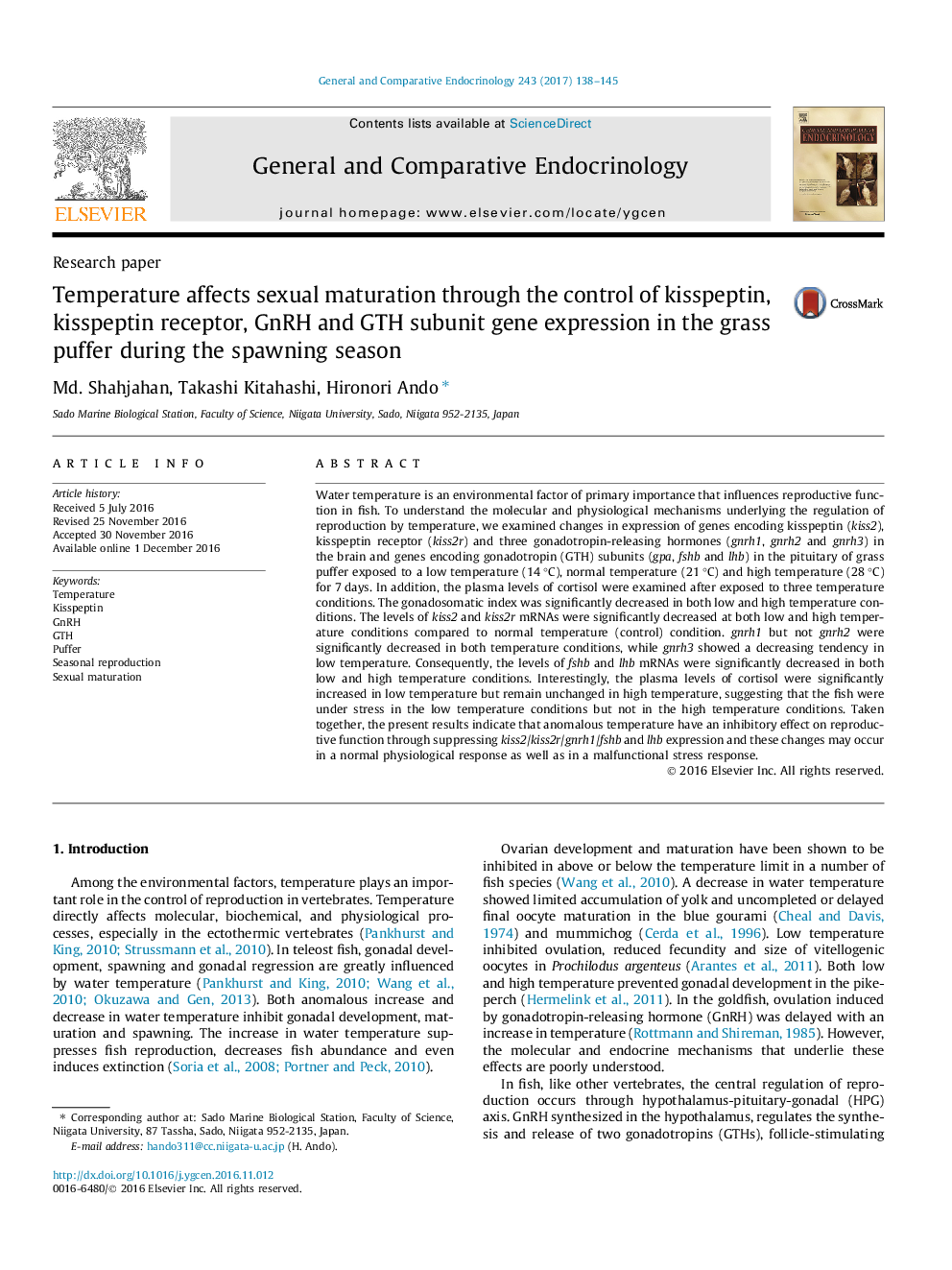| کد مقاله | کد نشریه | سال انتشار | مقاله انگلیسی | نسخه تمام متن |
|---|---|---|---|---|
| 5587644 | 1568864 | 2017 | 8 صفحه PDF | دانلود رایگان |

- The kiss2 and kiss2r along with gnrh1 were significantly decreased at both low and high temperature.
- The fshb and lhb were significantly decreased in both low and high temperature.
- Plasma levels of cortisol were significantly increased in low temperature but not in high temperature.
- Anomalous low and high temperature may shut down the reproduction through suppression of kisspeptin/GnRH1/GTH system.
Water temperature is an environmental factor of primary importance that influences reproductive function in fish. To understand the molecular and physiological mechanisms underlying the regulation of reproduction by temperature, we examined changes in expression of genes encoding kisspeptin (kiss2), kisspeptin receptor (kiss2r) and three gonadotropin-releasing hormones (gnrh1, gnrh2 and gnrh3) in the brain and genes encoding gonadotropin (GTH) subunits (gpa, fshb and lhb) in the pituitary of grass puffer exposed to a low temperature (14 °C), normal temperature (21 °C) and high temperature (28 °C) for 7 days. In addition, the plasma levels of cortisol were examined after exposed to three temperature conditions. The gonadosomatic index was significantly decreased in both low and high temperature conditions. The levels of kiss2 and kiss2r mRNAs were significantly decreased at both low and high temperature conditions compared to normal temperature (control) condition. gnrh1 but not gnrh2 were significantly decreased in both temperature conditions, while gnrh3 showed a decreasing tendency in low temperature. Consequently, the levels of fshb and lhb mRNAs were significantly decreased in both low and high temperature conditions. Interestingly, the plasma levels of cortisol were significantly increased in low temperature but remain unchanged in high temperature, suggesting that the fish were under stress in the low temperature conditions but not in the high temperature conditions. Taken together, the present results indicate that anomalous temperature have an inhibitory effect on reproductive function through suppressing kiss2/kiss2r/gnrh1/fshb and lhb expression and these changes may occur in a normal physiological response as well as in a malfunctional stress response.
Journal: General and Comparative Endocrinology - Volume 243, 1 March 2017, Pages 138-145